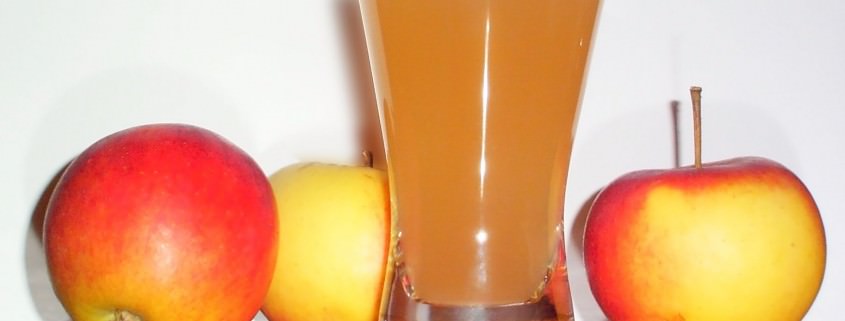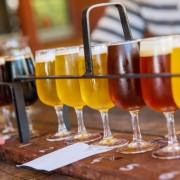The Hard Cider Revolution
Mention hard cider ten years ago, and the name of this cold alcoholic beverage might not even register with more than a handful of traditional American beer drinkers. Not so today. Consumer demand for cider is increasing, and big corporations are moving in on this promising market, with Angry Orchard cider the fastest growing brand of the Boston Beer Company (producer of Samuel Adams). Even Stella Artois and Michelob – both owned by Anheuser-Busch InBev – now sell hard cider. Last year, MillerCoors bought the Crispin Cider Company. European financial institution the Rabobank describes the U.S. market for hard cider as “just emerging.”
Hard Cider: Past and Present, at Home and Abroad
In the past decade, global consumption of hard cider has increased by 50 percent. According to the Rabobank, in the U.K. (hard cider’s leading market), the drink (which is usually about 6% alcohol) accounts for 20% of the nation’s beer sales and still has potential for enormous additional growth. As ciders grow in popularity, varieties continue to expand, both in the United States and in Europe. Chicago’s Province, for instance, has been offering by-the-glass ciders from Normandy; South Haven, Michigan, and the Basque country of Spain. Most of the dry artisanal ciders that Paris’ Breizh Cafe has on its list, by contrast, are not even yet available in the United States.
Hard cider has a long history in the U.S., going back to colonial America, when it was the national beverage until the influence of the 19th century wave of German immigrants made beer the more popular drink. Prohibition affected all alcohol sales, of course, but after Prohibition came to an end, spirits and beer took the lead, as they are easier to produce; new apple orchards, unfortunately, would have required years to produce – and so hard cider fell behind.
The Influence of the Locavore Movement
The local sourcing (or “locavore”) movement plays such an important role in restaurant menus today, and its influence on hard cider sales is no exception. Nicole LeGrand Leibon, who makes cider at Farnum Hill, says that niche farming is one reason more people have recently become interested in hard cider. Sebastian Lousada, who runs Flag Hill Farm with his wife, Sabra Ewing, points out that making cider still requires a great deal of hands-on manual labor. Consumers increasingly appreciate knowing that products are made locally and on a small scale.
The Influence of the Craft Beer Movement: Variety and Taste Complexity
Whereas five years ago the ciders that Americans were consuming could be best described as very sweet, now that small producers have gotten more involved, there are more dry (“serious”) ciders available domestically. As a result, according to a recent Consumer Edge Insight’s Alcoholic Beverage DemandTracker survey, those who normally would not drink cider due to the sugary taste might now be more willing to give it a try. In addition to the dry ciders now increasingly available to more beer-minded customers, Food & Wine magazine says that among the ciders to most recently hit the market are varieties flavored using the same kinds of hops that beermakers use.
The Effects of Polar Pricing, New Brands, and General Availability on Consumer Interest
The best thing that bar owners and restaurateurs can currently do to increase hard cider sales is simple: keep both premium and inexpensive selections in stock to cover both ends of the price spectrum. Eric Schmidt, who directs research for Technomic and is an expert on alcoholic beverage trends, explains why the so-called “hybrid consumer” is so important today: “The slow economy and a level of uncertainty have some consumers reducing their visits to or spending in restaurants and bars, while at the same time their interest in more complex flavor experiences is prompting them to continue exploring expensive products.” Rabobank reports that such buyers are most likely young (30 and under) and female – and women are also even more likely than men to be among the one third of consumers to have increased their consumption of cider in response to the availability of new flavors or brands.
Any way one examines the trend, for bar owners and restaurateurs, cider sales have been continuing to grow and offer tremendous, yet-to-be realized additional potential. Consumers are interested in trying hard cider when enough of the right varieties are available, and they are willing to spend their earnings on prices that run the full range of the economic spectrum. What is more, the many consumers who already enjoy and consume hard cider literally cannot get enough of it; according to Consumer Edge Insight, when asked what would make them purchase hard cider more often, 26% of those who already consume the drink at least once a week most frequently responded, simply, “if it was available in more bars and restaurants.”
- Uncorkd Adds New Vendor Purchasing, Tracking and Reporting Functionality - February 13, 2018
- Uncorkd Adds New Inventory Management Functionality with POS Integration - July 24, 2017
- How Many Red or White Wines Should You Have on Your List - May 3, 2016









